What RC servos do you need for your radio controlled boats? Learn more about different servos: mini, micro, standard, jumbo, metal gear, ball bearing, digital, sail winch.
RC servos come in many varieties for a number of applications. Here are the most common with brief descriptions of what they can be good for as they relate to model boats.
A lot of different servos that used to be exotic are now pretty much common place and the cost has dropped considerably over the years.
They include:
- Micro servos (or sub-mini)
- mini servos
- servos with ball bearing on final gear
- metal geared servos
- jumbo, or 1/4-scale servos
- linear servos
- digital servos
Many of these featured are also combined. For instance, I believe all jumbo servos these days come with metal gears and ball bearings.
When comparing servos you need to consider the manufacturer’s specifications. The features that should be listed include:
As with everything else, performance costs money. Most expensive is the fastest and strongest with the lightest weight in the smallest possible package. Then there are "soft" features, such as brand. Futaba is probably seen as the best in RC gear worldwide. Others include JR, GWS, Hitec, E-Flite, Sanwa, ElectriFly, Traxxas, Spectrum and Graupner among many others.

Rudder Steering
Unless your model boat relies on vectorized steering, your boat will need at least one servo to operate a rudder. This is the most obvious application of an RC servo on a model boat.
For multiple rudders the traditional solution was to have a single rudder operate one rudder directly, and add parallel linkage between multiple rudders. While this method still works as well as always, it’s not the simplest to execute.
With the reduced cost and weight of servos today, the same functionality can be accomplished with two servos and a Y-harness. Aside from being easier to install, this solution reduces back-lash between the servo and rudders.
Standard Servos
A standard servo can handle the steering of 90% of all model boats. Standard refers mostly to the size, not necessarily to the performance, so be sure to compare specs.
Mini and Micro Servos
These servos are great in small model boats; say less than 1kg (2 lbs). They also work well for applications where the servo needs to be located high up in the upper works for stability. Most RC kit conversions to RC can benefit from using mini or micro servos because these model boats tend to be top heavy.
Jumbo Servos, AKA 1/4-Scale Servos
The term 1/4-scale servo stems from the use in model aircraft. A 1/4-scale aircraft is huge and therefore need a lot of muscle to move it's control surfaces.
The applications in model boats is similar - big boat equals big servos. These servos also make excellent sail winch servos for medium sized rc sailboats.
Digital Servos
Digital servos are claimed to be more accurate than conventional analog servos. If you feel you need better accuracy, make sure you have a lash-free setup between servo and load first by using ball joints on all connections. If you still feel it's inadequate, consider digital servos.
Sail Winch Servos
For sailboats, you’ll also need a winch servo to handle the sheet (or sheets) to control the sails. There are servos on the market especially designed for this purpose. These servos are optimized for pull force and either come with a drum or a long arm on the output shaft.
For many RC sailboats, where racing is secondary or non-existing, a regular jumbo servo can be used just as well with a home-made extended arm. There is little benefit in cost, but if you already have the jumbo you may as well use it.
Other Uses for RC Servos
Scale model boats can be fitted with servos to operate other motions on the model boats, such as turret rotations on warships, cranes on working boats etc.
RC Naval Combat skippers generally need several servos to trigger cannons and operate gun turrets.
Back in the days you'd typically have RC servos operating switches for other scale model boat functions, such as lights and to turn motors on and off. This application is largely outdated because today a relatively inexpensive MERS (Micro Electronic Receiver Switches) that will do the same job without any mechanical motion. This saves power and space in the model.
Years ago just about all RC Controls that were on the market came with at least two servos. Today the norm is shifting towards no servos included with the Radio. It’s probably fair, since your application may warrant a more specialized version than the standard servos typically provided.
Return from RC Servos to Radio Controlled Boats
Return to Homepage
| Facebook Twitter |
Would you prefer to share this page with others by linking to it?
- Click on the HTML link code below.
- Copy and paste it, adding a note of your own, into your blog, a Web page, forums, a blog comment, your Facebook account, or anywhere that someone would find this page valuable.
- Plans Store
- Model Boat Books
- Model Boats Intro
- Building Materials
- Make a Hull
- Plastic Kits
Radio Control
- US Battleships
- Torpedo Boats
- Model Boats Q&A
- Model Ship Gallery
- What's New?
- Privacy Policy

By Petter Blix
Copyright 2009-2018 Building-Model-Boats.com
Trademarks belong to their respective owners
All Rights Reserved
JavaScript seems to be disabled in your browser. You must have JavaScript enabled in your browser to utilize the functionality of this website.
Choose language
Choose currency, choose country.
Total Price
Privacy Policy and Cookies
This website uses cookies to ensure proper functionality of the shopping cart and checkout progress. By continuing to browse the site you are agreeing to the use of cookies. Click here to learn about cookie policy.
Accept and Close
error This is age restricted product
This item is age restricted and cannot be delivered to minors. Our courier Parcelforce Worldwide will request passport or driver's license if the recipient looks under 25.
Please tick the box to confirm that you are over 18 years of age and that delivery will be accepted by a person over 18 years of age.
Please select checkbox.

Return to RC Sailboats
RC Sailboat Controls – Radio Layout, Radio Setup
RC Sailboat Controls are rather different then your typical Radio Control.
We will first look at what channels on the radio control transmitter, control which part of the RC Sailboat and then we will look at the specific setup concerning the radio gear on an RC Sailboat.
Transmitter Channels and Controls – RC Sailboat Controls
The most common type of transmitter for RC Sailboats are the stick type transmitters . The stick type transmitter allows the ease of use over the sail control. On a stick type transmitter referring to the image below, the left

RC Sailboat Controls
side channel, typically throttle on an airplane controls the Sails. Moving the left side stick up or down would draw the sail in or let the sail out. Motion on the stick is vertically.
The stick on the right hand side controls the rudder on the RC Sailboat. The rudder channel operates as like any other rudder channel. Motion on the stick is horizontally.
These two channels are the required minimum for RC Sailboat Controls. You can see all the extra switches and controls on the radio to the right. These may be used for controlling those fancy features on your RC Sailboat. In some cases these extra features include alternate lighting, winches, or anything else to make the sailboat appear and operate more scale like.
Radio System Controls – RC Sailboat Controls

RC Radio Receiver
Now that we have talked about the transmitter we will look at the rest of the components that are required in order to run an RC Sailboat. The component that is responsible for talking to the transmitter is the receiver. The receiver is what talks to the transmitter and then converts the radio signal to an electrical signal that can be used to control the rudder and sails of a sailboat. The reciver can be purchased with the transmitter if you choose to take that route. Purchasing a transmitter/receiver combination is more common when building your own boats.
Receiver Battery – RC Sailboat Controls
To power the radio equipment a standard receiver battery is required. This is a battery that operates on 4.8-6.0v. Although a 4 cell disposable AA case can be used, it is highly recommended for an RC sailboat to use a rechargeable battery . The main reason is to ensure the battery pack can supply a sufficient amount of current to the servos. For larger RC sailboats a rechargeable battery is a requirement. The average user would use a 4.8-6.0v NiMh pack however LiFE, Li-ion, LiPo packs are available but be certain to include a Voltage Regulator in your system to limit the voltage.
Sail Servo – RC Sailboat Controls
The most important servo for an RC Sailboat is of course the Sail Servo. The sail servo comes in two different styles that are most common. Each style has its own specific set of advantages and disadvantages. The first style of sail servo that we will talk about is the sail winch servo.
The sail winch servo as pictured on the right hand side uses a drum like wheel to house the sail line. When the drum rotates the line is either let out or brought in. The Sail winch servo typically allows for 3 rotations of the drum with

Sail Servo Winch – Sail Servo – RC Sailboat Controls
torque specs around the 150 oz-in / 11 kg-cm. The biggest difference is that these torque specs are at a relatively short distance from the center point of the drum. This small distance increases the amount of torque relative to the next sail servo type that we will be looking at.
Sail Winch Servo Advantages:
- Amount of force generated to pull in the sails
- Amount of total line length (travel) that can be brought in – approximately 3 revolutions of the drum
- Relatively Small Space Requirement, even with larger servo sizes
Sail Winch Servo Disadvantages:
- Slow Reaction time relative to transmitter input as winch must rotate up to 3 times

Sail Arm Servo – RC Sailboat Controls
The other Sail Servo style is the arm type . The arm type sail servo uses quite a long arm in order to get an acceptable amount of line draw. As you may expect this operates nearly the same as a standard servo where the only difference is the servo arm itself. For a typical one meter Sailboat, you would require a servo of this style that has at least 150 oz-in / 11 kg-cm of torque as a minimum. This style servo requires more torque then a winch servo as the amount of force produced at the end of the arm is reduces due to the length of the arm.
Sail Arm Servo Advantages:
- Very quick response time vs the Sail winch Servo
- More servo options as any standard servo can be used with a long sail arm. Options for very high torque servos are available
- Line has less chance of getting tangles or wrapped upon itself as compared to the winch style servo
Sail Arm Servo Disadvantages:
- Require a lot of space due to the radius of the outer point of the sail servo arm
- Lower amount of Line Draw force due to length of Arm requiring higher torque at the servo for equal performance that of a winch style servo
- Generally has a smaller total line length(travel) that can be brought in resulting in lower amount of sail movement (travel)
Steering Servo – RC Sailboat Controls
Radio Control Info Articles
- 3D Printing (2)
- General Electric (44)
- General Radio Control (13)
- Patreon Posts (102)
- RC Airplanes (6)
- RC Boat (3)
- RC Cars/Trucks (19)
Recent Articles
- New to RC? Avoid These 7 Rookie Mistakes and Save Big Time! July 20, 2024
- RC Battery Sheet V24.07 Released – Zeee Battery Added July 2, 2024
- RC Calc Sheet V24.06 Released – SoC Calculator June 3, 2024
Use My Location
Browser location service must be enabled.
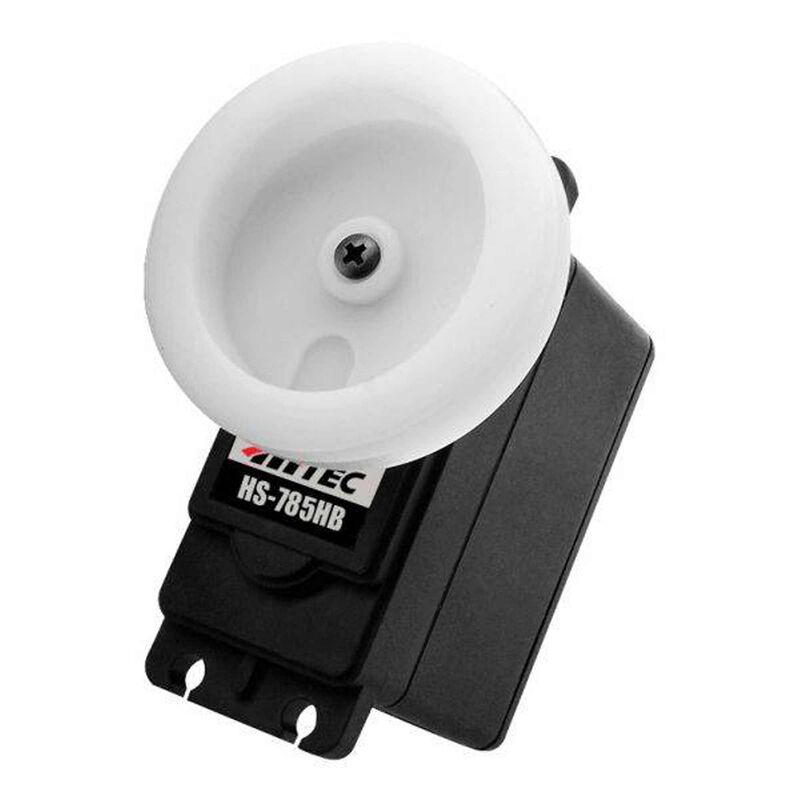
HS-785HB Giant Scale Analog Karbonite Gear Sail Winch Servo
Selected store, all features.
The HS-785HB sail winch servo with it's large drum wheel has 3 1/2 revolutions of travel for hauling in even the largest of sails. With its dual ball bearing supported output shaft the HS-785HB will provide years of reliable service.
- Speed: @4.8V 1.68sec/60' / @6.0V 1.38sec/60'
- Torque: @4.8V 153oz/in / @6.0V 183oz/in
- Large Drum Wheel with 3.5 Revolutions of Travel
- Strong Karbonite Gear Train
- Dual Ball Bearing-Supported Output Shaft
- Water and Dust-Resistant Case
Key Features
- Dual Ball Bearing Supported Output Shaft
- Large Drum Wheel
- Perfect replacement winch servo for the Pro Boat Ragazza
- *** Warning: Do not use thread lockers on Karbonite geared servo as it will cause the output shaft to fail
Detailed Information
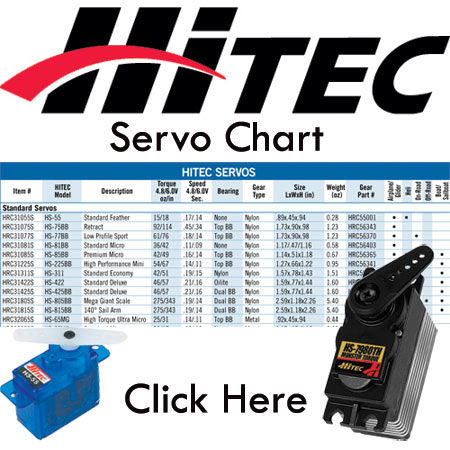
Product Specs
Manuals & support, instruction manual, miscellaneous, get info from communities, product details.
- (1) HS-785HB Giant Scale Analog Karbonite Gear Sail Winch Servo
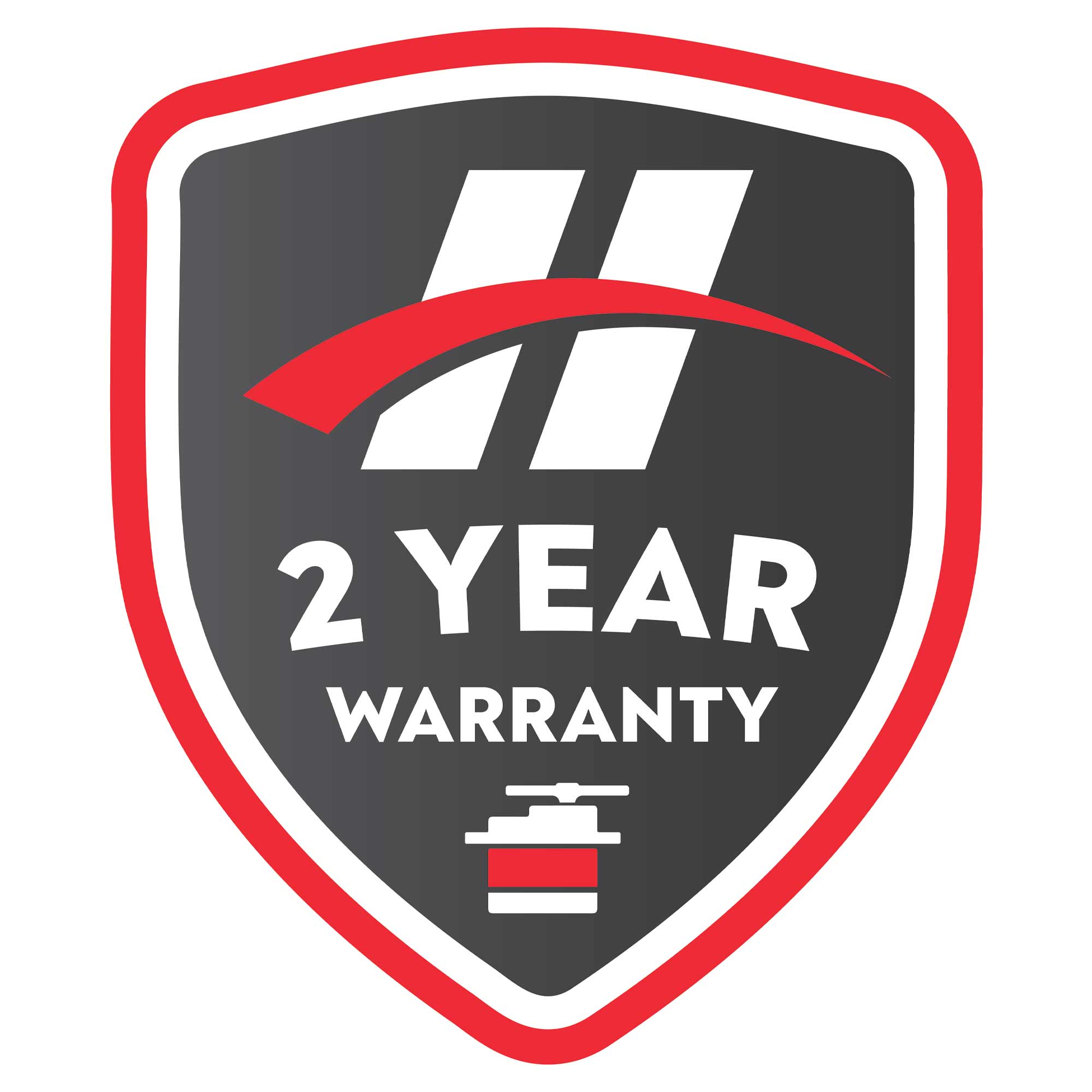
Club Points Information
Horizon Hobby RC Club:
The points displayed are points you will earn based on your membership level and the cost value of the product. Be sure you are Signed In to your account to see the most accurate points you will earn on your purchase. Points are awarded and available for use once your order has shipped complete.
| Points per $1 Spent | Standard | Legend | Elite |
|
|
|
|
2000 points = $5 Discount
Points displayed here do not include Bonus Points for select product. If the product is marked with the Bonus Points badge you will also earn the extra "Bonus Points" points listed in the banner in addition to the calculated points displayed
- Hitec Japan
- Hitec Korea
- Hitec Germany
- HS-785HB Karbonite, 3.5 Turn Winch Servo
Part No: 33785S

Buy it Now:
Product description.
The HS-785HB sail winch servo with its large drum wheel has 3 1/2 revolutions of travel for hauling in even the largest of sails. With its dual ball bearing supported output shaft the HS-785HB will provide years of reliable service.
- Large Drum Wheel with 3.5 Revolutions of Travel
- Strong Karbonite Gear Train
- Dual Ball Bearing-Supported Output Shaft
- Water and Dust-Resistant Case
Accessories
- Karbonite Gear Set | Link |
- Plastic Case Set | Link |
- Applicable Horns
HS-785HB Servo Specifications
| Operating Voltage Range (Volts DC) | 4.8V ~ 6.0V |
| Speed (Second @ 60°) | 1.68 ~ 1.38 |
| Maximum Torque Range oz. / in. | 153 ~ 183 |
| Maximum Torque Range kg. / cm. | 11.0 ~ 13.2 |
| Current Draw at Idle | 8 mA |
| No Load Operating Current Draw | 250 mA |
| Stall Current Draw | 1,800 mA |
| Dead Band Width | 5 µs |
| Dimensions (Inches) | 2.32 x 1.14 x 1.96 |
| Dimensions (Metric) | 59.0 x 29.0 x 50.0 |
| Weight (Ounces) | 3.88 |
| Weight (Gram) | 110.0 |
| Circuit Type | HT7003 Analog MosFet |
| Motor Type | 3 Pole Metal Brush Ferrite |
| Gear Material | Karbonite |
| Bearing Type | Dual Ball Bearing |
| Output Shaft (type / Ømm) | Standard 24 |
| Case Material | Plastic |
| Dust / Water Resistance | Splash Proof |
| Connector Gauge (AWG) / Strand Count | 22 / 60 |
| Parkflyer | N / A |
| Sport Plane | N / A |
| Sailplane | N / A |
| 3D Performance | N / A |
| Scale | N / A |
| Electric Helicopter | N / A |
| Gas Helicopter | N / A |
| On Road | N / A |
| Monster Truck | N / A |
| Buggies | N / A |
| Truggies | N / A |
| Short Course / Truck | N / A |
| Crawlers | N / A |
| Sail Boat | =>1M+ & Scale |
| Power Boat | N / A |
- HS-765HB Karbonite, Sail Control Servo
Home | Servos | Chargers | Transmitters | Receivers | Aircraft | Where to Buy | Support | TecTalk | About | Contact | Site Map | CMS Login
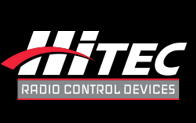
HITEC RCD USA, Inc. • 9320 Hazard Way Suite D, San Diego, CA 92123 • Ph: 858.748.6948 • Fax: 858.748.1767
©2024 Hitec RCD USA, Inc. • The materials used and displayed on the Service and the Sites, including but not limited to text, software, photographs, graphics, illustrations and artwork, video, music and sound, and names, logos, trademarks and service marks, are the property of are the property of Hitec Group USA, Inc. or licensors and are protected or its affiliates or licensors and are protected by copyright, trademark, and other laws.
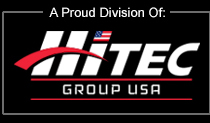

- Shipping and Returns
- Privacy Notice
- Feedback or questions? Let us know!

- New Products
- Back In Stock
- Featured Products
- Closeout Deals
- Refer a Friend
- Enterprise Drone Products
- STEM and Educational UAS4STEM all Drones in School all
- Digital FPV Gear HDZero Digital FPV all DJI Digital FPV all Walksnail Digital FPV all
- FPV Starter Packages Starter Packages all Pro Shop Builds all
- FPV Video Components Cameras & Related Cameras Lenses Mounts & Gimbals Camera Cables all Transmitters all Receivers all Goggles & Displays FPV Goggles Monitors Goggles Accessories all Antennas & Adapters Antennas RF Extensions, Connectors, Adapters RF Filters Antenna Mounts all OSD, DVR, Ground Station DVR Flight Controllers & OSD OSD/FC Sensors & Parts Ground Station Parts Carrying Cases all
- Goggles & Displays FPV Goggles all Monitors all Goggle Accessories all
- Multirotor & Related RTF, PNP, Kit Frames RTF & PNP Frame Kits Replacement Parts all Powertrain Motors - Brushless ESCs all Electronics Flight Controllers & OSD Power Distribution RC Receivers all Props all Video Parts Cameras Video Transmitters Antennas all
- Airplanes & Related Airplanes & Parts RTF, PNP, BNF Planes Kits & ARF Planes Replacement Parts Launching all Electronics Airplane Motors - Brushless ESCs Servos Servo Extensions and Cables RC Receivers OSD & Flight Controllers OSD/FC Sensors & Parts all Build & Repair Parts Carbon Strips, Rods, Tubes Control Horns, Hinges, Linkages Glue & Epoxy Covering Laminate all
- Batteries & Power Batteries & Accessories Batteries Straps Alarms Connectors & Adapters Wire all Chargers & Accessories Chargers Power Supplies Charge Cables & Boards all
- Propellers & Adapters Props all Accessories & Parts all
- Electronics & Wiring Power Power Distribution Power Filters Voltage Regulators Voltage Testers Power Supplies all Wire & Cables Wire Cables Heat Shrink Connectors all ESCs, Motors, & Servos ESCs Motors - Brushless Servos Servo Testers & Accessories all Misc LEDs Microphones OSD & Flight Controllers OSD/FC Sensors & Parts Alarms & Buzzers Relays, Video Switches, Splitters SD Cards Heat Sinks all
- RC Radios RC Transmitters all RC Receivers all UHF 433 900 - RC Systems all RC Radio Accessories all Telemetry & Data Links all
- Motors & Motor Parts Motors - Brushless all Motor Parts all
- Hardware Adhesives & Tape Tape Glue & Epoxy Hook & Loop all Build Hardware Carbon Strips, Rods, Tubes Control Horns, Hinges, & Linkages Covering Laminate Wheels & Axles all Standoffs, Fasteners, Dampening Standoffs Vibration Dampening Screws Nuts Washers Clips all Misc Carrying Cases Heat Sinks all
- Tools Build Tools Soldering Hand Tools Portable & Travel all Programming Tools all
- Race Gear & Swag Shirts all Race Gear all Swag all
- US HAM Video TX
- Airplanes & Related
- Electronics
- MPI S100-MG Sail Winch Servo
MPI S100-MG Sail Winch Servo by MPI
- Model: S100-MG
- RMRC Win: 81480
- Shipping Weight: 0.373
- Country of Origin: CN
- Technical Info
- Related Categories
Related Products
The Maxx Products MPI S100-MG Sail Winch Servo is designed for IOM (International One Meter) sailboats, and it works great as an antenna or camera pan servo as well!
Includes a brushless motor plus all metal gears providing 1440 degrees of rotation. Universal servo plug to fit Futaba, Hitec, JR, and Airtronics style servo plugs.
Huge voltage range input 4.8V-8.4V
Operating Specifications
- Voltage: 4.8v - Speed: 0.115s for 60 degrees Torque: 180 oz/in Max Load Current: 2.80A
- Voltage: 6.0v - Speed: 0.090s for 60 degrees Torque: 236 oz/in Max Load Current: 3.60A
- Voltage: 7.4v - Speed: 0.075s for 60 degrees Torque: 263 oz/in Max Load Current: 4.00A
- Voltage: 8.4v - Speed: 0.070s for 60 degrees Torque: 305 oz/in Max Load Current: 4.900A
Package Includes:
- 1x Sail Winch Servo
- Aluminum Winch Drum
| Name | Value |
|---|---|
| MPI |
Also found in:
- Electronics & Wiring
- ESCs, Motors, & Servos
Also ordered with:


60cm (24 inch) JR Style 22AWG Twisted Servo Cable

Hitec D955TW 32-Bit High Torque Titanium Gear Servo
Only 3 left

RMRC Futaba Style 3 Way On/Off Switch 22awg Wire

Tattu R-Line 850mAh 14.8V 95C 4S1P Lipo with XT60

Matek Micro BEC 6-30V to 5V/9V (3 PCS)
Only 2 left

TrueRC BARDpole 2.4
Fast shipping from ohio.

- Account Home
- Order History
- Account Balance
- Gift Certificate Redeem/Send
- Manage Rewards
- Shipping & Returns
- Conditions of Use
- Buy Gift Certificate
- Drone Dollar Rewards
- Refer a Friend Program
- Discounts and Coupons
- FAA Remote ID Info
Have questions or feedback? Let us know!
You can also contact us at [email protected] . Or give us a call at +1(740)-936-4500 .
- STEM and Educational
- Digital FPV Gear
- FPV Starter Packages
- FPV Video Components
- Goggles & Displays
- Multirotor & Related
- Batteries & Power
- Propellers & Adapters
- Motors & Motor Parts
- Race Gear & Swag
- Drones in School
- HDZero Digital FPV
- DJI Digital FPV
- Walksnail Digital FPV
- Starter Packages
- Pro Shop Builds
- Cameras & Related
- Transmitters
- Antennas & Adapters
- OSD, DVR, Ground Station
- FPV Goggles
- Goggle Accessories
- RTF, PNP, Kit Frames
- Video Parts
- Airplanes & Parts
- Build & Repair Parts
- Batteries & Accessories
- Chargers & Accessories
- Accessories & Parts
- Wire & Cables
- RC Transmitters
- RC Receivers
- UHF 433 900 - RC Systems
- RC Radio Accessories
- Telemetry & Data Links
- Motors - Brushless
- Motor Parts
- Adhesives & Tape
- Build Hardware
- Standoffs, Fasteners, Dampening
- Build Tools
- Programming Tools
- Mounts & Gimbals
- Camera Cables
- Goggles Accessories
- RF Extensions, Connectors, Adapters
- Antenna Mounts
- Flight Controllers & OSD
- OSD/FC Sensors & Parts
- Ground Station Parts
- Carrying Cases
- RTF & PNP
- Replacement Parts
- Power Distribution
- Video Transmitters
- RTF, PNP, BNF Planes
- Kits & ARF Planes
- Airplane Motors - Brushless
- Servo Extensions and Cables
- OSD & Flight Controllers
- Carbon Strips, Rods, Tubes
- Control Horns, Hinges, Linkages
- Glue & Epoxy
- Covering Laminate
- Connectors & Adapters
- Power Supplies
- Charge Cables & Boards
- Power Filters
- Voltage Regulators
- Voltage Testers
- Heat Shrink
- Servo Testers & Accessories
- Microphones
- Alarms & Buzzers
- Relays, Video Switches, Splitters
- Hook & Loop
- Control Horns, Hinges, & Linkages
- Wheels & Axles
- Vibration Dampening
- Portable & Travel
[ Back to previous page - T37 Radio control sailboat Racing Upgrade Kit ]
We have done more experimenting with HiTec ultra torque digital programmable servos for use as the sail servo in the T37. More skippers are moving to these remarkable servos. The digital ultra torque servos are the same outside dimensions as the standard size analog servos, but the digital servos carry a big punch. In conditions where it might be difficult to pull the sails in with the analog 645 ultra torque servo and might even require a momentary partial luff, the 5645 servo yanks the sails right in tight. The HS645MG analog servo is rated at 133 oz. inches of torque at 6 volts, the D645MW (shown as the HS5645MG in the above picture) digital servo is rated at 168 oz. inches of torque at 6 volts, and the HS7954SH digital servo is rated at a huge 333 oz. inches of torque! Wow! This 7954 top of the line servo truly has twice as much power as you will ever need and it is definitely over the top, but on the other hand it is pretty neat. There certainly isn't even a flicker of hesitation no matter what the wind is doing at the moment. One drawback is that the standard sail arms aren't necessarily strong enough for all of this extra torque with the 7954 servo. The upgraded stainless steel and aluminum sail arm for the 7954 servo costs an additional $10.50 and the servo itself is $97.50. Everyone who has the D645MW servo feels entirely satisfied with its power and only a few skippers have installed the 7954 servo just for the fun of seeing what it will do.
One important aspect of these digital servos is that they can be programmed for up to 120 degrees of swing instead of the standard 90 degrees of arc. Any digital servo you get from Tippecanoe Boats will be already programmed for the maximum swing. Along with the double throw sheeting system in the racing setup for the T37s, the extra swing on the servo gets your sails out almost perpendicular to the centerline and pulls the main in to a centered position and the jib in to create a perfect slot. When you also program your digital transmitter, you can increase the throw on the servo even farther to almost 180 degrees, although beyond 120 degrees there really isn't much further gain in how far in or out the mainsail can be sheeted. Programming the digital servos is easy once the Chinese instructions that come with the progamming device have been decoded. A small programmer connects to your PC with a USB cable and is available from HiTec for just over $20. This is entirely adequate unless you want to be able to program servos for other skippers while at the pond in which case you may want the stand alone programmer which sells for around $100. One note: if you are trying to program the 7954 servo, this is a high resolution servo and cannot be programmed for more swing until you reset the resolution to normal instead of high resolution. This is easily done by clicking on the box that says High Resolution in the programming window that appears on your computer screen. The box then reads normal resolution. The instructions don't happen to mention this detail and until you switch the resolution your efforts to increase the sweep will not take hold on the 7954. The 5645 is a normal resolution servo so the resolution does not need to be reset to program the D645MW servo for maximum swing.
The wonderful attraction of the T37 continues to be that it is a wooden boat that is quickly and easily built and turns out a gorgeous yacht that is very fast and exciting to sail. When a group gets together to race, each boat is distinctive and unique. Each boat is a reflection of the skipper's personal vision. Many of the T37s that are being built today are truly works of art, fast and functional but definitely expressive and very beautiful!

- Toys & Games
- Remote & App Controlled Vehicles & Parts
- Remote & App Controlled Vehicle Parts
- Servos & Parts

Image Unavailable

- To view this video download Flash Player
Hitec RCD Inc. Mega Sail Arm Servo HS-815BB Universal HRC31815S Servos
Purchase options and add-ons
| Brand | Hitec RCD |
| Hand Orientation | Ambidextrous |
| Color | black |
| Material | Plastic |
| Item Weight | 0.44 Pounds |
| Manufacturer | Hitec RCD |
| UPC | 885123019869 669962310697 |
About this item
- Speed: @4.8V .19sec/60' / @6.0V .14sec/60'
- Torque: @4.8V 274.96oz/in / @6.0V 343.01oz/in
- Powerful 4.9 inch Sail Arm with 140* Movement
- Thick and Strong Nylon Gears
- Dual Ball Bearings
Frequently bought together

Customers who bought this item also bought

Product information
| Brand | Hitec RCD |
|---|---|
| Hand Orientation | Ambidextrous |
| Color | black |
| Material | Plastic |
| Item Weight | 0.44 Pounds |
| Manufacturer | Hitec RCD |
| UPC | 885123019869 669962310697 |
| Product Dimensions | 4 x 3 x 2 inches |
| Item Weight | 7 ounces |
| ASIN | B0006O3X3Q |
| Item model number | 31815 |
| Manufacturer recommended age | 14 years and up |
| Best Sellers Rank | #630,810 in Toys & Games ( ) #118 in |
| Customer Reviews | 4.0 out of 5 stars |
| Is Discontinued By Manufacturer | No |
Warranty & Support
Product Description
Extremely powerful sail winch servo, with dual ball bearings and Hitec S type connector. Connector is compatible with all modern receivers and wiring accessories SPECS: Indirect drive motor Water tight case Transit time .46 seconds/140° Torque 231 oz-in DIMENSIONS: 66x30x56.7mm, 2.59x1.18x2.23" (L,W,H) INCLUDES: Servo mounting screws, grommets, and eyelets 1 each of the following servo arms. Large wheel, large X, and large straight arm. 1 sail arm, 122mm overall length, 110mm center of mount to outside hole. Special Y- harness for use with BEC receivers
Looking for specific info?
Customer reviews.
Customer Reviews, including Product Star Ratings help customers to learn more about the product and decide whether it is the right product for them.
To calculate the overall star rating and percentage breakdown by star, we don’t use a simple average. Instead, our system considers things like how recent a review is and if the reviewer bought the item on Amazon. It also analyzed reviews to verify trustworthiness.
Customers say
Customers like the performance of the fishing reel, mentioning it's a very reliable powerful servo. They also appreciate the super torque. However, some customers have reported issues with warranty replacement parts. Opinions are mixed on speed.
AI-generated from the text of customer reviews
Customers are satisfied with the performance of the fishing reel. They mention that it is a very reliable, powerful servo that is long-lived. Some customers have had no luck in getting warranty replacement parts.
"...for a number of years and find them very reliable and long lived . I use them in my Soling 1 meters and my larger US-12...." Read more
" Super torque ..." Read more
" Good product ,have had no luck in getting warranty replacement parts...." Read more
Customers have mixed opinions about the speed of the fishing reel. Some mention that it works well and as intended, while others say that it makes strange noises and works very slowly. Some customers also mention that the reel does not respond to input.
"Strong strong strong Works great !" Read more
"...screwed it down to my newly designed servo platform and the stupid thing would respond ...." Read more
" Works well ." Read more
"...lasted about 30 minutes and started making strange noises and working very slowly . I removed it and sent it back to Hi Tec also...." Read more
- Sort reviews by Top reviews Most recent Top reviews
Top reviews from the United States
There was a problem filtering reviews right now. please try again later..
- Amazon Newsletter
- About Amazon
- Accessibility
- Sustainability
- Press Center
- Investor Relations
- Amazon Devices
- Amazon Science
- Sell on Amazon
- Sell apps on Amazon
- Supply to Amazon
- Protect & Build Your Brand
- Become an Affiliate
- Become a Delivery Driver
- Start a Package Delivery Business
- Advertise Your Products
- Self-Publish with Us
- Become an Amazon Hub Partner
- › See More Ways to Make Money
- Amazon Visa
- Amazon Store Card
- Amazon Secured Card
- Amazon Business Card
- Shop with Points
- Credit Card Marketplace
- Reload Your Balance
- Amazon Currency Converter
- Your Account
- Your Orders
- Shipping Rates & Policies
- Amazon Prime
- Returns & Replacements
- Manage Your Content and Devices
- Recalls and Product Safety Alerts
- Conditions of Use
- Privacy Notice
- Consumer Health Data Privacy Disclosure
- Your Ads Privacy Choices
- Shipping Info
- OVERSTOCK SALE!
- Parts Department
- Battery Finder

- All Parts Department
- Traxxas Parts
- Team Corally R/C Parts
- DHK Hobby Parts
- Maverick Parts
- Atomik Boat Parts
- Atomik Motorcycle Parts
- Atomik Truck/Car Parts
- BlackZon R/C Parts
- Carisma Car Parts
- CEN Racing Parts
- Exotek Parts
- Hot Racing Parts
- Pro-Line Parts
- Rage R/C Parts
- Robinson Racing Parts
- Savox Servos
- ST Racing Concepts Parts
- Venom Parts
- Essential Extras and Parts
- Align T-REX 100S Parts
- Align T-REX 100X Parts
- Extreme-Flyer Parts
- G-Made Parts
- HP Heli's X-2 Dual-Rotor Heli Parts
- Invader FPV Parts
- Lynx FPV Parts
- Spy Hawk FPV Parts
- X4 Quadcopter Parts
- Megatech Parts
- Rocker F1 Boat Parts
- UDI Lark Quadcopter Parts
- Overstock/Clearance
- All Battery Finder
- 7.4V 2S LiPo Batteries
- 11.1V 3S LiPo Batteries
- 4S or Greater LiPo Batteries
- NiCd RC Batteries
- 6-Cell or Less NiMh Batteries
- 7-Cell NiMh Batteries
- 8-Cell or Greater NiMh Batteries
- All Chargers
- A/C Wall Chargers
- LiPo Balance Chargers
- Multi-Function Chargers
- NiMh and NiCd Fast Chargers
- All Radio Systems
- Air RC Radio Systems
- RC Radio System Receivers
- Surface RC Radio Systems
- Beginner R/C
Rage Eclipse Sailboat Sail Winch Servo, B1327
Write a review.

- Create New Wish List
- Description
This is the Sail Winch Servo for the Rage Eclipse Sailboat.
- PRODUCT ACCESSORIES

Rage Eclipse Sailboat 40g Waterproof Servo, B1328

Rage Eclipse Sailboat Printed Sail with Dyneema Cord, B1307
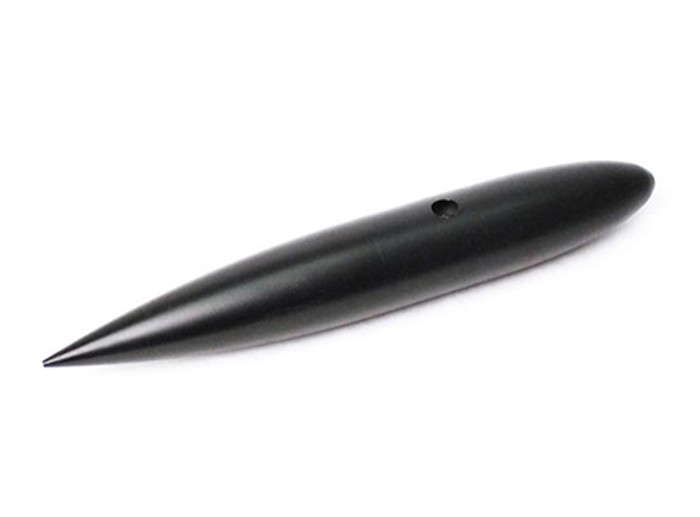
Rage Eclipse Sailboat Ballast, B1322
OUT OF STOCK

Guide to Model Boat Servos: Types, Features, Installation and Maintenance
- By - Kyle Hilson
- Posted on November 14, 2023 November 15, 2023
- Posted in RC Boats
Model boat servos are an essential component of any model boat. These small electrical motors are responsible for controlling the movements of the sail, rudder, and other important components of the vessel. Model boat servos come in different forms and sizes, each equipped to serve a specific purpose. The purpose of a model boat servo is to convert electrical signals received from a receiver into physical motion. This motion is then used to control the movement of the model boat. Model boat servos come in three main types: standard, mini, and micro. Each type is designed to accommodate specific needs based on the size and type of model boat being used. Understanding the different types, features, and installation methods of model boat servos can help hobbyists and enthusiasts achieve optimal performance for their vessels. With regular maintenance, model boat servos can operate at peak capacity, enhancing the performance and enjoyment of model boat enthusiasts.
Types of Model Boat Servos
There are three main types of model boat servos : standard , mini , and micro . Each type is designed to cater to a different size of the model boat and the amount of strength and torque required in its mechanism. Here are some details about each type:
- Standard Servos: These are the largest and most powerful type of servos and provide the highest amount of torque. They are ideal for larger model boats and need considerable space for installation.
- Mini Servos: These are smaller than standard servos and offer moderate torque. They are ideal for mid-sized model boats and require less installation space.
- Micro Servos: These are the smallest and lightest type of servos and offer low torque. They are designed for smaller-sized model boats and require minimal space for installation.
Model boat enthusiasts can get their hands on model boat servos online as there are several e-commerce websites and online marketplaces that offer a range of high-quality servos, including popular brands such as Futaba , Hitec, and Spektrum . These servos come in different price ranges, depending on the features and capabilities offered. It is essential to choose the right model boat servo based on the desired specifications to ensure optimal performance and control of the vessel.
What are the 3 types of servos?
Servos are important components in various mechanical systems, including robotics, aviation, and manufacturing. They are designed to enable precise and smooth movement control, making them essential for a wide range of applications. There are generally three types of servos: positional rotation, continuous rotation, and linear.
Positional rotation servos are commonly used in robotics and automation systems. They operate by receiving electrical signals that control their speed and direction. They enable precise control over the angular position of a motor, controlling the motion of robot arms, wheel rotation, and other applications that require accurate positioning.
Continuous rotation servos are often used for driving wheels or propellers since they can rotate continuously in either direction. They do not have a specific position as the rotor turns indefinitely, and they operate using similar electrical signal control input as positional rotation servos.
Lastly, linear servos are a type of servo motor that uses a lead screw or a ball screw to create linear motion. They provide linear movement and operate in much the same way as positional or continuous servos, albeit providing a different kind of motion.
In conclusion, understanding the three types of servos is essential when selecting an appropriate servo motor for various applications such as industrial automation, aviation, and robotics. Whether positional rotation, continuous rotation, or linear motion is required, the correct type of the servo must be selected to achieve the desired results.
Features of Model Boat Servos
Apart from their size and torque, model boat servos have several features that can enhance the performance of a model boat. Here are some key features to look out for:
- Speed Control: Servos offer adjustable speed control , allowing for adjustments based on the specific requirements of the model boat. This feature can be especially useful for sailing in challenging water conditions.
- Waterproofing: Some servos come with waterproofing capabilities, which can prevent damage from water infiltration. These servos are essential for model boats that can go underwater and operate in wet conditions.
- Gear Material: The gears in servos can be made from different materials, such as brass, aluminum, or plastic. Each material has different strength and durability levels, which can affect the lifespan of the servo.
- Size of the Output Shaft: The output shaft connects the servo to the sail or rudder of the model boat. The output shaft comes in different sizes, which can affect the amount of torque it can deliver to the sail or rudder.
In addition to these features, some model boat servos also come with advanced capabilities, such as programmable settings and digital display interfaces. These serve as additional tools for hobbyists and enthusiasts to make the necessary adjustments and modifications to enhance their model boat operation. The following table outlines some popular model boat servos available in the market, and their features and specifications.
| Model | Type | Torque (oz-in) | Speed (s/60 deg) | Waterproofing |
|---|---|---|---|---|
| Standard | No | |||
| Mini | No | |||
| Micro | No | |||
| Standard | Yes |
How do model servos work?
Model servos are small devices that are essential for controlling all types of remote-controlled vehicles, from planes and helicopters to cars and boats. They are essentially small motors that are combined with a circuit board, a gear train, and a potentiometer to produce a precise and controlled movement.
The way in which model servos work is relatively straightforward. When an electrical signal is sent to the servo, it activates the motor, which turns a small gear. This gear is connected to a larger gear, which in turn engages the output shaft of the servo. As the motor turns the gear, the output shaft rotates as well, providing precise angular control.
To provide precise angular control, model servos incorporate a potentiometer. This is a variable resistor that moves in proportion to the angle of rotation of the output shaft. The rotation of the potentiometer is detected by the servo’s circuit board, which feedback to the controller of the remote-controlled vehicle This enables the controller to adjust the position of the output shaft to within a very small tolerance, making model servos ideal for both precision and control.
Overall, model servos are small but incredibly powerful gadgets that are essential for remote-controlled vehicles. Whether you are flying a plane or racing a car, you can benefit from the precision and control that these devices provide. By understanding how they work, you can gain a greater appreciation for the mechanics of these small but vital components.
Model Boat Servo Installation:
Installing model boat servos properly can make a big difference in how the boat performs and how long the servo lasts. There are several things to keep in mind when installing servos in a model boat.
- Mounting: The servo should be mounted securely inside the boat, preferably with screws or bolts. This will keep the servo from wobbling or shifting when the boat is in motion.
- Connection: The servo arm should be attached securely to the sail or rudder. The connection should be tight enough to transfer the servo’s movement to the boat, but not so tight as to restrict the servo’s movement.
- Wiring: The servo wiring should be hidden and secured inside the boat to prevent tangling and damage during sailing. Make sure the wiring is secured with a zip tie or other fastener to prevent it from coming loose during sailing.
- Test: After installing a servo, it’s important to test it to ensure it’s properly installed and adjusted. Make sure the servo moves the rudder or sail through the proper range of motion. Adjust the servo if necessary before going out for a sail.
If you’re a first-time model boat builder , it might be challenging to install servos on your own. Some hobby shops and online retailers offer installation services and tutorials, which can be a great help. There are also many online resources available, such as YouTube tutorials and online forums, where hobbyists share tips and tricks.
In addition, some products come with an installation manual that walks you through the process step by step. The manual usually contains information on how to connect the servo, how to adjust the settings, and how to test it to ensure it’s working properly.
Don’t forget to check out reliable servo brands that offer high-quality models with different torque specs, sizes, and types. These dependable servos will help you optimize the performance of your model boat.
How do you set servos?
To set servos, there are a few different steps you should take. First, make sure your servo is properly connected to your device and powered on. You can then use software or a controller to adjust the position and movement of your servo. This can typically be done by sending signals to the servo through your device.
One important thing to keep in mind when setting servos is the range of motion that your specific device and servo are capable of. Depending on your equipment, you may need to adjust the movement limits of your servo to ensure that it doesn’t get damaged or move beyond its physical capabilities.
Another factor to consider is the speed at which your servo moves. Some devices may require very slow, precise movements, while others may need quick, sudden movements. Finding the right speed and motion profile for your specific application can take some trial and error, but once you find the right settings, your servo should operate reliably and effectively.
Overall, setting servos is a key part of many robotics and automation applications, and understanding how to do it correctly can help ensure that your project is a success.
Maintaining model boat servos is essential for their longevity and proper operation. Regular care and maintenance can extend the lifespan of the servo and ensure that the model boat operates smoothly. Here are some tips for maintaining model boat servos :
- Cleaning: After every use, clean the servo thoroughly to remove any debris or dirt that may have accumulated on it. Use a can of compressed air or a dry cloth to remove dirt and debris.
- Lubrication: Periodically lubricate the gears inside the servo to keep them moving smoothly. Apply a small amount of lubricant to the gears and spin the servo a few times to distribute the oil.
- Replacement: If a servo becomes damaged or worn out, it’s important to replace it as soon as possible. Delaying a replacement can cause further damage to the servo or the model boat .
- Storage: When not in use, store the servo in a dry and dust-free environment. Keep the servo away from direct sunlight and extreme temperatures. Failure to store the servo properly can lead to damage and malfunction.
In addition to these tips, there are some products available that can help with the maintenance of model boat servos . For example, some manufacturers offer servo grease and oil for lubricating the gears, and servos savers to prevent wear and damage of the servo gears. These products can often be found at hobby shops or online retailers that sell model boat parts.
Regular maintenance of the model boat servos will keep them in optimal condition and prolong their lifespan, ensuring many enjoyable sailing sessions to come.
How long do servos last?
Servos are commonly used in remote controlled toy cars, planes and boats as well as in robotics and automation. One of the most frequently asked questions about servos is “how long do they last?”
Although it is difficult to provide a definitive answer, the typical lifespan of a servo can be anywhere from a few months to several years, depending on factors such as usage, quality and maintenance.
If a servo is used regularly and exposed to harsh conditions, such as dust, water or extreme temperatures, it may have a shorter lifespan. Additionally, if it is made of quality materials and receives proper care and maintenance, it can last longer.
Furthermore, just like any other electronic device, servos can fail unexpectedly due to manufacturing defects or other unforeseen problems. Therefore, it is important to purchase servos from reputable manufacturers and to monitor their performance regularly.
In general, a well-maintained servo can last for years, providing smooth and precise movements. However, it is important to keep in mind that the lifespan of a servo can vary greatly depending on various factors, so it’s always a good idea to keep a spare on hand just in case.
In conclusion, model boat servos are a critical component of any model boat, allowing for precise control of the vessel’s movements on the water. Hobbyists and enthusiasts who invest the time and effort to understand the different types, features, and installation methods of servos will be rewarded with a well-operating model boat. Properly maintaining the servos can also help ensure they have a long lifespan. Regular cleaning, lubrication, and replacement of damaged components go a long way in keeping the servos running smoothly. When choosing model boat servos, it’s important to consider the type of boat and the intended use. By following these tips and choosing the right servos for the job, model boat enthusiasts can enjoy their hobby to the fullest.
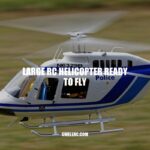
Previous Article
Next article.

Trending Now
- helicopters
- rock crawler
Popular Products
- green Green

- black Black
- silver Silver
Shop Your RC Interests
Rock crawlers, drift cars & on road cars, monster trucks, helicopters, new arrivals, get the most services for your products, indoor r/c track, r/c doctor available, shop at our store.
- Choosing a selection results in a full page refresh.
Thanks for subscribing!
This email has been registered!
Shop the look
Choose options.
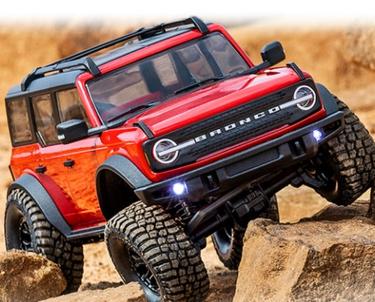
Join Our Mailing List
Recently viewed.
- Facebook Facebook
- Instagram Instagram
- Newsletter Sign-up Newsletter Sign-up
Edit Option
Back in stock notification.

IMAGES
VIDEO
COMMENTS
Enjoy Rc Boat Servos of Temu's best price, superior quality & full range of services. Awesome Rc Boat Servos & High Quality Here On Temu. New Users Enjoy Free Return.
Jumbo Servos, AKA 1/4-Scale Servos. The term 1/4-scale servo stems from the use in model aircraft. A 1/4-scale aircraft is huge and therefore need a lot of muscle to move it's control surfaces. The applications in model boats is similar - big boat equals big servos. These servos also make excellent sail winch servos for medium sized rc sailboats.
If you are looking for servos and sail winches for your RC boat, Hobbyking has a wide selection of high-quality and waterproof products to suit your needs. Whether you have a monsoon, orion, phantom, surmount or any other sailboat model, you can find the right servo and sail winch for your boat at Hobbyking. Shop now and enjoy the best prices and free shipping on eligible orders.
Steering Servo - RC Sailboat Controls. The steering servo is responsible for operating the rudder on an RC sailboat to provide directional control. In most cases a Futaba S3003 Standard Servo would be more then suitable. In general for a one meter RC Sailboat or slightly larger, you are looking for a servo that can manage a torque ...
HS-785HB Giant Scale Analog Karbonite Gear Sail Winch Servo. Hitec RCD Inc. - HRC33785S. 3.7. $54.99. RC Club points earned on this item shown at checkout. Add to Wishlist. Add to Cart. Shop Local | Call your local store to confirm product availability. Intro.
The HS-785HB sail winch servo with its large drum wheel has 3 1/2 revolutions of travel for hauling in even the largest of sails. With its dual ball bearing supported output shaft the HS-785HB will provide years of reliable service. Features. Large Drum Wheel with 3.5 Revolutions of Travel;
Here's how I built the sail winch system in my RC (48" schooner) sailboat. I use a HiTec radio and operate the winch servo with the throttle channel. I also ...
The Maxx Products MPI S100-MG Sail Winch Servo is designed for IOM (International One Meter) sailboats, and it works great as an antenna or camera pan servo as well! Includes a brushless motor plus all metal gears providing 1440 degrees of rotation. Universal servo plug to fit Futaba, Hitec, JR, and Airtronics style servo plugs.
VBESTLIFE RC Servo Motor Gear, Metal Gears Alloy Sail Winch Anolog Servos for RC Ship Rope Machine. 1.0 out of 5 stars. 1. $30.29 $ 30. 29. Buy 2, save 3%. FREE delivery Wed, Jul 3 on $35 of items shipped by Amazon. Or fastest delivery Tue, Jul 2 . Only 8 left in stock - order soon.
Savox SH-1290MG Super Speed Metal Gear Digital Servo. OUT OF STOCK. + FREE SHIPPING! Retail Price: $94.99. Our Price: $76.99. Add To Cart. Save on Savox Boat and Sailboat Hi-Performance Servos at RC Hobby Explosion - your Savox R/C Superstore!
SERVO | Sailboat RC
One drawback is that the standard sail arms aren't necessarily strong enough for all of this extra torque with the 7954 servo. The upgraded stainless steel and aluminum sail arm for the 7954 servo costs an additional $10.50 and the servo itself is $97.50. Everyone who has the D645MW servo feels entirely satisfied with its power and only a few ...
DOVERC RC Servos:35kg Servo High Torque Servo RC Steering Servo RC Crawler Servo Full Aluminum Case for 1/8 1/10 1/12 RC Car/Boat with 25t Servo Horn (Control Angle 180°) 83. $3187. FREE delivery Wed, Jan 10 on $35 of items shipped by Amazon. Only 12 left in stock - order soon.
Extremely powerful sail winch servo, with dual ball bearings and Hitec S type connector. Connector is compatible with all modern receivers and wiring accessories SPECS: Indirect drive motor Water tight case Transit time .46 seconds/140° Torque 231 oz-in DIMENSIONS: 66x30x56.7mm, 2.59x1.18x2.23" (L,W,H) INCLUDES: Servo mounting screws, grommets, and eyelets 1 each of the following servo arms.
Rage Eclipse Sailboat Sail Winch Servo, B1327 Rating Required Select Rating 1 star (worst) 2 stars 3 stars (average) 4 stars 5 stars (best) Name
This is the easiest way to set your winch servo and sail in average winds. You need a 20 Kilograms servo or greater.
Sail Winch Servo - DF65 suitable for V1 - V6
The purpose of a model boat servo is to convert electrical signals received from a receiver into physical motion. This motion is then used to control the movement of the model boat. Model boat servos come in three main types: standard, mini, and micro. Each type is designed to accommodate specific needs based on the size and type of model boat ...
Futaba rudder servo for IOM class. This is the servo we use for the "K2 IOM sailboat to steer your rudder. This servo ensures best level of quality and price.
I was, blown away! For the TD1609S (standard size servo with 229 oz.-in of torque at 8.4v) the max drift was 6 counts (0.3 degrees) and the cumulative drift was less than 1 count, 0.02 degrees! This means that after 20 tests the center point was not measurably different from the original center!
Originally Posted by pvogel. 1609=62.3g, 0606=22.7g, 0806=40g, total weight in my allure = 187.7g, that's less total servo weight than any other combo of servos I've used in the past. Add 10g to get to the 2211 with 19.3 kg-cm torque at 7.4v. Keep in mind that given the throw distance needed on the rudder you are going to have more than a 1cm ...
Thom Walla, Merlin Hayes and Mary Hayes founded HobbyTown Unlimited, Inc. in 1985 and opened the first franchise store in 1986. Today, HobbyTown franchise stores span the U.S. from coast to coast, making us the leader in the retail hobby and specialty toy industry. With more than 100 HobbyTown franchise stores in over 35 states in the ...
Servo For Rudder DF65 or DF95 RC Sailboat Josyway Original - Metal Gears ...
Large San Jose RC hobby shop store showcasing remote control vehicles, cars, trucks, drones, airplanes, supplies, replacement parts, & equipment, toys for children and kids, model kits, & rockets.